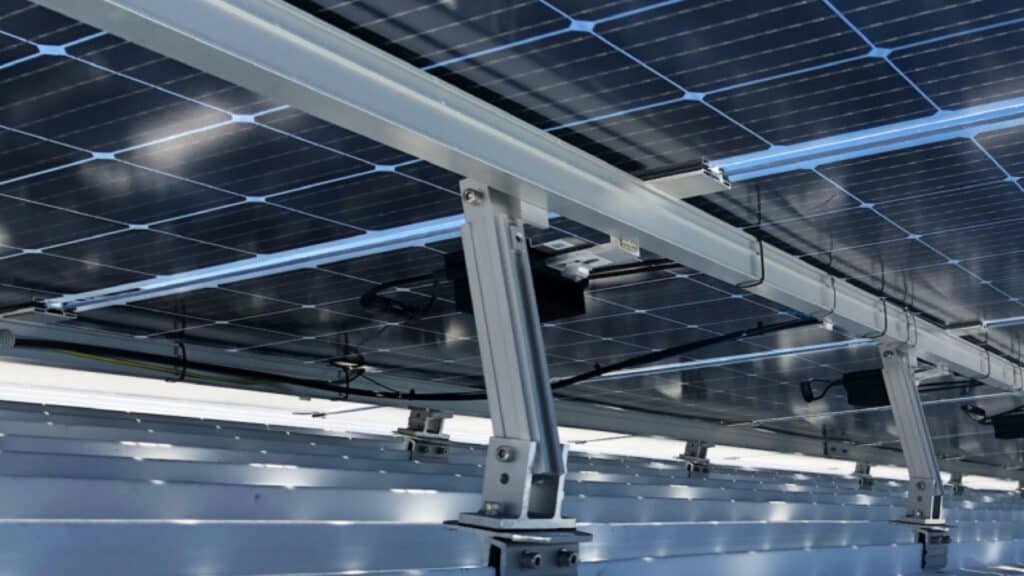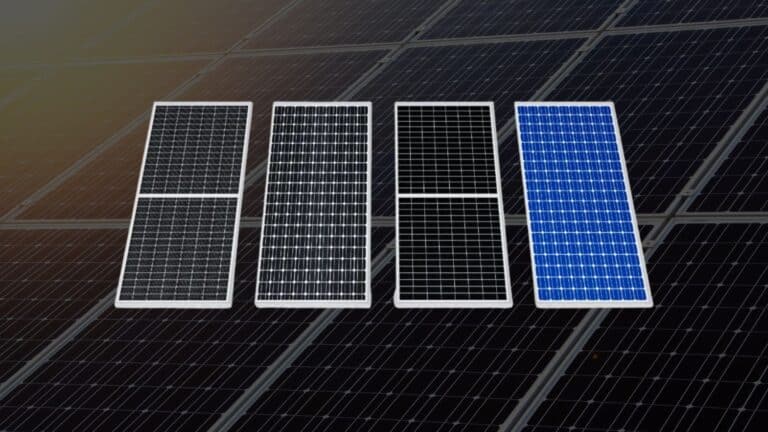When it comes to solar panels, there are several types to choose from, each with its own unique characteristics, benefits, and drawbacks. As the demand for renewable energy sources continues to grow, it’s essential to understand the differences between these types of solar panels to make an informed decision for your home or business.
Monocrystalline Solar Panels
Monocrystalline panels are known for their high-efficiency rates among solar technologies, typically ranging from 15% to 22%. This efficiency translates to more electricity production per square meter, making them suitable for limited roof space. They have a lifespan of up to 30 years and degrade at a rate of about 0.3% per year. However, their manufacturing process, which involves cutting silicon ingots into cells, contributes to higher costs and their installation process can be challenging due to their fragile nature.

Polycrystalline Panels
Polycrystalline solar panels strike a balance between performance and cost. They offer a mid-range efficiency rate and a durable design, with a lifespan of up to 25 years and efficiency rates ranging from 13-16%. Their installation process is also relatively easier compared to monocrystalline panels. While they may not be as efficient as monocrystalline panels, they offer a more affordable option for those looking for a reliable solar panel. They are manufactured by melting multiple silicon crystals together, resulting in a lower cost per watt compared to monocrystalline. These panels degrade slightly faster than monocrystalline, typically at a rate of about 0.5% per year.
Ultralight Solar Panels
Ultralight solar panels are known for their lightweight design and ease of installation. They can be easily installed on various surfaces, making them a versatile option. Ultralight panels offer a significant advantage in scenarios where traditional, heavier panels would be impractical. Their efficiency rates are comparable to polycrystalline panels, typically ranging from 12% to 15%. These panels are engineered using advanced materials and manufacturing processes to ensure durability and reliability over their lifespan, similar to conventional solar panels.
Amorphous Silicon Solar Panels
Amorphous silicon solar panels offer a cost-effective option for those on a budget. They have a lower efficiency rate, 6-9%, compared to other types of panels, but still provide decent energy output. Their durability and installation requirements are similar to polycrystalline panels. While they may not be the most efficient option, they provide a reliable and affordable solution for many homeowners. These panels degrade at a rate of about 0.3% to 0.8% per year.

Types of solar panels: Bifacial Solar Panels
Bifacial solar panels are the ultimate high-performing option. They offer an innovative design that allows them to absorb light from both sides, increasing their energy output.
By optimizing photon capture from all angles, bifacial panels deliver superior efficiency with rates that range from 15% to 30%, depending on factors such as ground albedo and mounting configuration. This design enhances energy production by up to 20% compared to monofacial panels in optimal conditions This makes them a versatile and technically advanced choice for maximizing solar energy production across diverse geographic and climatic settings.

meeco’s Forward-Thinking Approach
From May onwards, meeco has decided to exclusively integrate bifacial solar panels into their operations, aiming to boost performance and efficiency. They place utmost priority on client satisfaction, without any compromise. This strategic decision underscores their commitment to utilizing advanced solar technologies to meet evolving energy needs effectively.
In conclusion, selecting the optimal solar panel involves careful consideration of factors like efficiency rate, cost-effectiveness, durability, and installation requirements. Each type of solar panel offers distinct advantages and limitations. Seeking guidance from seasoned professionals like meeco, with over 24 years of industry experience and expertise in cutting-edge solar panel installations, ensures that you make an informed decision tailored to your specific needs. This ensures that you make an informed decision tailored to your specific needs. However, by exclusively adopting bifacial solar panels starting this May, meeco demonstrates why it remains a trusted leader in the solar industry, committed to delivering innovative solutions that meet the evolving demands of sustainable energy.


